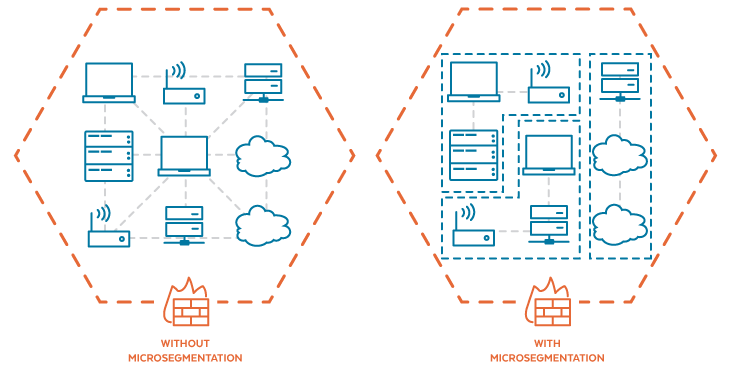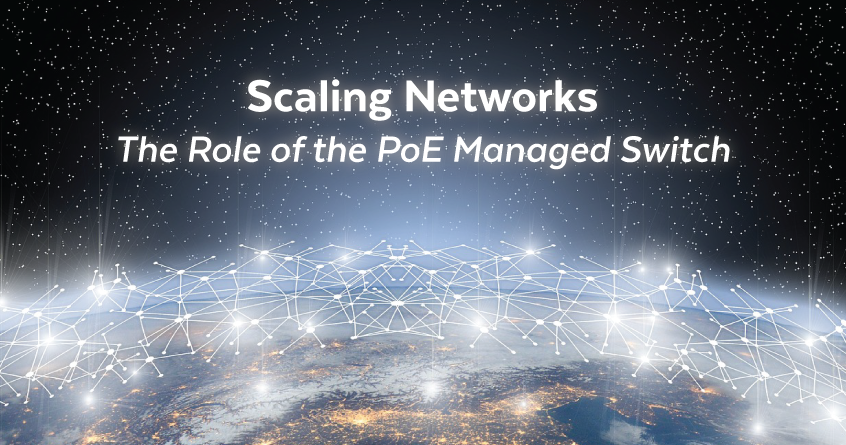For 175 years, people have repeated the old adage, “The more things change, the more they stay the same.” Some have even applied this concept to technology, believing that appearance and functionality may change, but the core principles and underlying functions are constants. For example, computers still rely on binary code despite decades of innovation. Although organizations are demanding more from their networks, hardware such as cables, routers, and switches continue to form the basis of a network’s infrastructure. Network switches are an example of this in practice. Unmanaged and managed switches provide the same core functionality of traffic control, but managed switches offer enhanced features for improved network management. A Power over Ethernet (PoE) unmanaged or managed switch delivers power and data to connected devices through a single Ethernet cable. Of the two, a POE managed switch is better equipped to support the growing demand for software-defined wide-area networking (SD-WAN), micro-segmentation, edge security, and multi-cloud architecture.
Why Use Power Over Ethernet (PoE)?
PoE eliminates the need for additional external power sources by combining power and data delivery within a single standard Ethernet cable. It also lowers installation costs because electricians are not required to set it up. A network engineer can quickly run an Ethernet cable to the desired endpoint, and the device will receive power and data connectivity.
Resiliency
PoE technology has few pain points. When an uninterruptible power supply (UPS) is added alongside it, it can provide continuous operations even when power is disrupted. This feature further improves the security of network operations.
Visibility
PoE-managed switches offer increased visibility across the network. They can monitor connected devices and restart an endpoint that is no longer communicating. Restarting can be performed automatically, manually, or on a schedule. This functionality improves network uptimes and reduces network disruption.
Flexibility
IT departments can remove, add, relocate, and reconfigure devices without waiting for an electrician. Network managers can quickly move devices wherever there’s an Ethernet cable, which means that when using a PoE-managed switch, any room with an Ethernet connection can become a conference room.
How a PoE Managed Switch Supports Networking Trends
In the next few years, network administrators will focus on the following trends:
- SD-WAN deployment.
- Microsegmentation.
- Secure Access Service Edge (SASE).
PoE-managed switches offer technical capabilities that can support these emerging trends without burdening IT staff or carrying out disruptive deployments.
SD-WAN
Like similar technologies, SD-WAN requires network hardware to route traffic over a network. However, SD-WAN software has the intelligence to decide how to route packets based on application type, network performance, and defined policies. This technology separates network control from hardware for greater flexibility. Because of this, network engineers will need separate tools to monitor their hardware.
Managed switches provide similar capabilities for network personnel. Suppose the SD-WAN software alerts network administrators of a slowdown in traffic coming from a specific connection. The software may successfully compensate for the slower speed by rerouting traffic, but this doesn’t address the cause.
In the above scenario, network engineers could access tools using a PoE-managed switch’s web interface. The engineer can then view the connectivity status of every device connected to the switch. If a device is not responding, it can be restarted remotely. Together, the administrator and engineer can identify and correct network problems before they become failures that disrupt operations.
 Micro-segmentation
Micro-segmentation
A network is like a big, happy family—until bad actors breach the perimeter and begin to wreak havoc. Segmenting the network into smaller networks prevents cybercriminals from accessing the entire network in one incursion.
Today’s cybersecurity landscape is more sophisticated, and many cybersecurity experts recommend segmenting a network into microsegments. These microsegments protect individual workloads and devices through access and traffic controls, making it difficult for attackers to move laterally.
Managed switches facilitate microsegmentation. Network managers use the user interface to implement access and traffic policies to protect each microsegment. Since PoE technology does not require separate power sources, creating smaller networks doesn’t require external resources. An IT department can add microsegments wherever an Ethernet cable is present.
 SASE
SASE
PoE technology was built for the edge. IP security surveillance systems can operate across an enterprise with PoE-enabled cameras connected to managed switches. Power becomes less of a concern in PoE-based setups, making room to prioritize camera placement instead. Better physical surveillance is just as critical as virtual surveillance.
A managed switch designed for security camera operations can deliver topologies to a user interface. The user can review camera placement and adjust it for improved coverage. Auto-discovery features provide centralized monitoring and diagnostic tools to help manage devices remotely.
Placing a PoE-managed switch at the edge can create a remote-controlled micro-segment for video surveillance. Traffic is controlled through policies that stipulate incoming sources and define a specific destination for video storage. These policies won’t impact SD-WAN implementations, as the hardware is kept separate from the traffic control.
Multiple Cloud Architecture
Organizations have moved from single cloud vendors to avoid vendor lock-in. By using more than one cloud provider, commercial customers have the flexibility to move as needs or vendors change. PoE-managed switches can be deployed as part of an SD-WAN implementation with connectivity to multiple clouds. This technology’s features make it an essential component of any network ready to evolve and implement the latest trends.
Why Use a PoE Managed Switch?
Managed switches deliver network visibility through remote access, and when coupled with a UPS, grant networks added resiliency. With PoE technology, edge devices can be deployed without a separate power source, increasing network flexibility.
As more organizations adopt SD-WAN and SASE technologies, managed switches become increasingly vital. These switches allow real-time collaboration between SD-WAN experts and hardware engineers on network issues. Strategically placing managed switches on the network can secure each micro-segment against attack and strengthen a multi-cloud implementation.
Although unmanaged and managed switches share the same base functionality, the “appearance and function” of managed switches far outweigh the simplicity of unmanaged ones. Versa Technology’s managed switches demonstrate their full capabilities. Contact us to learn more about PoE-managed switches.
 VX-GPF1626 24-Port GbE RJ45 + 2-Port GbE RJ45/SFP Web Smart+ GbE Managed PoE+ Switch
1 × $515.00
VX-GPF1626 24-Port GbE RJ45 + 2-Port GbE RJ45/SFP Web Smart+ GbE Managed PoE+ Switch
1 × $515.00  VX-GPU2610 L2+ 4-Port 802.3bt PoE + 4-Port 10/100/1000TX + 2-Port 100/1000X SFP Managed GbE UPOE Switch (240W, DMS)
1 × $489.00
VX-GPU2610 L2+ 4-Port 802.3bt PoE + 4-Port 10/100/1000TX + 2-Port 100/1000X SFP Managed GbE UPOE Switch (240W, DMS)
1 × $489.00 

 Micro-segmentation
Micro-segmentation SASE
SASE